Museums & Institutions
After Six Decades, Judy Chicago Is Finally Getting Her First Retrospective (and ‘The Dinner Party’ Isn’t in It)
The show is up now at the de Young Museum in San Francisco.
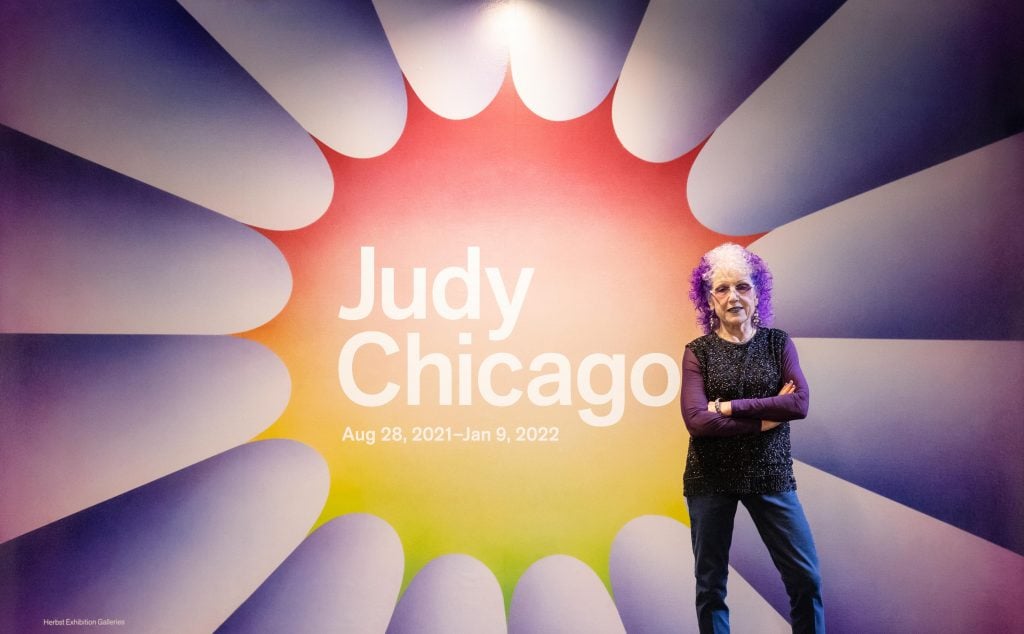
The show is up now at the de Young Museum in San Francisco.

Sarah Cascone

If there’s one takeaway from Judy Chicago’s first-ever retrospective, currently on view at the de Young Museum in San Francisco, it’s that there’s far more to the 82-year-old artist than The Dinner Party (1974–79), the masterpiece of feminist art that, for better or worse, has come to define the artist’s six-decade career.
“The goal from the beginning was to show the depth and breadth of her practice as an artist beyond The Dinner Party,” curator Claudia Schmuckli told Artnet News. “Putting the emphasis on the entirety of her career and the entirety of her output was always of utmost importance to us.”
To that end, “Judy Chicago: A Retrospective” is organized in reverse chronological order, beginning with the artist’s most recent work, a series inspired by mortality and extinction titled “The End” (2012–18). Chicago’s own death mask, a cast-bronze relief sculpture, is the centerpiece in a gallery with rich purple walls, surrounded by delicate glass paintings of animals that are threatened by climate change or the artist contemplating the end of her own life. Each is painted in exquisite detail and fired seven times.
“Judy felt the need for the work to be devastatingly beautiful so people would look at it, even though the subject matter was so difficult,” Schmuckli said.
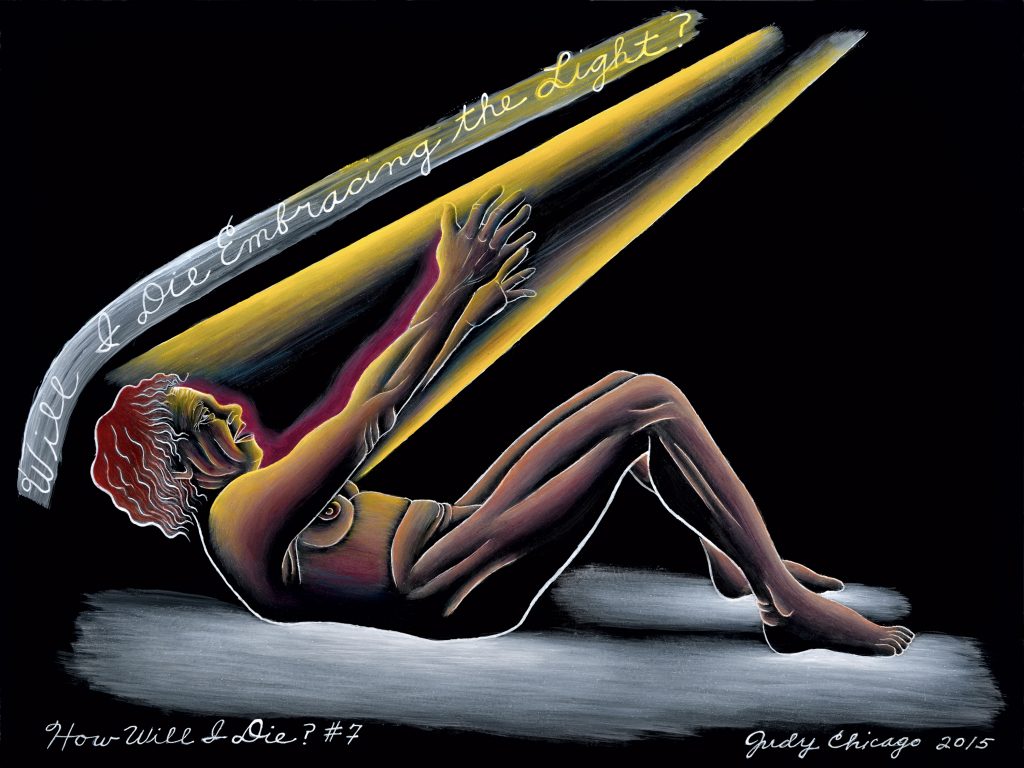
Judy Chicago, How Will I Die #7, from the series “The End: A Meditation on Death and Extinction” (2015). Courtesy of the artist; Salon 94, New York; and Jessica Silverman, San Francisco, ©Judy Chicago/Artists Rights Society (ARS), New York. Photo ©Donald Woodman/ARS, New York, courtesy of the Fine Arts Museums of San Francisco.
“It was important to me to highlight how forward thinking and daring Judy has always been in tackling uncomfortable subject matter that is now is very much at the forefront of our current discourse,” she added, pointing to the condemnation of toxic masculinity in Chicago’s “PowerPlay” series (1982–87), which presented gender as a performative societal structure.
“It feels like for once her concerns and society’s concerns are aligned,” Schmuckli continued, “so I felt it would be a very powerful gesture to open with ‘The End’ and to establish her as an artist who is vitally engaged with the here and now.”
The ’70s, of course, was when Chicago was working on The Dinner Party, a massive installation of a triangular table with place settings for 39 historical and mythological women.
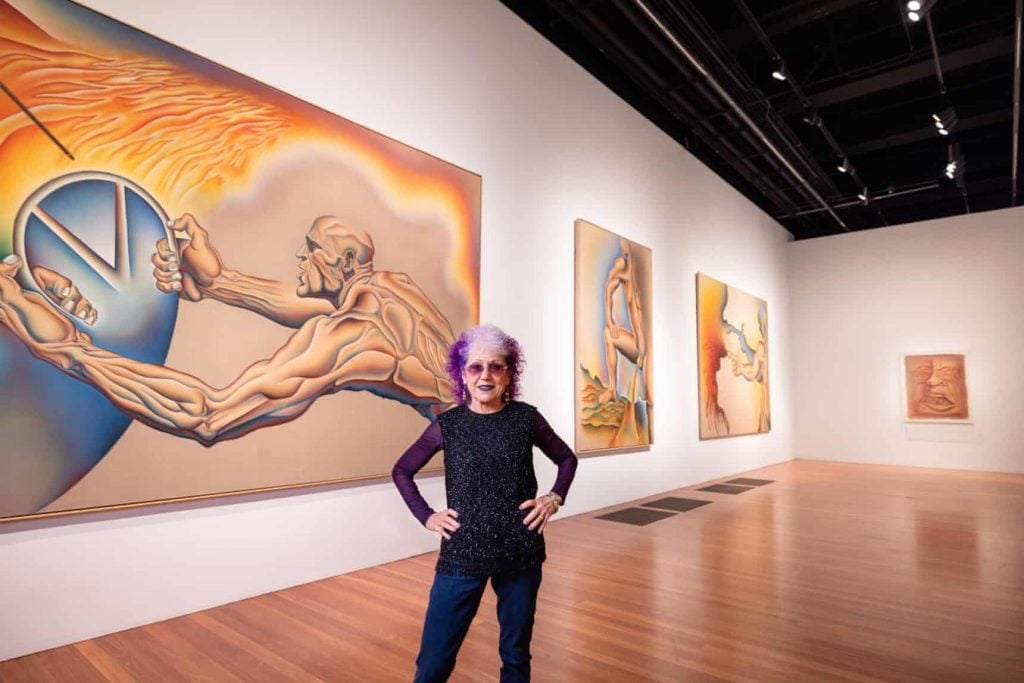
Judy Chicago with paintings from her “Power Play” series in her retrospective at the de Young Museum, San Francisco. Photo by Gary Sexton, courtesy the de Young Museum, San Francisco.
The project’s scope, incorporating challenging historical research as well as embroidery and various types of textile work, china painting, and other forms of craft rarely acknowledged by the contemporary art world, took a team of some 400 volunteers nearly six years to complete.
“Judy was really trying to resurface the history of female achievement throughout centuries, which was a subject matter that resonated not only with her, but also with millions of women,” Schmuckli said.
The work originally debuted in San Francisco, at SFMOMA, but it’s not actually in the retrospective since it is permanently housed at the Brooklyn Museum’s Elizabeth A. Sackler Center for Feminist Art. Instead, it is represented by its test plates and other preparatory materials.
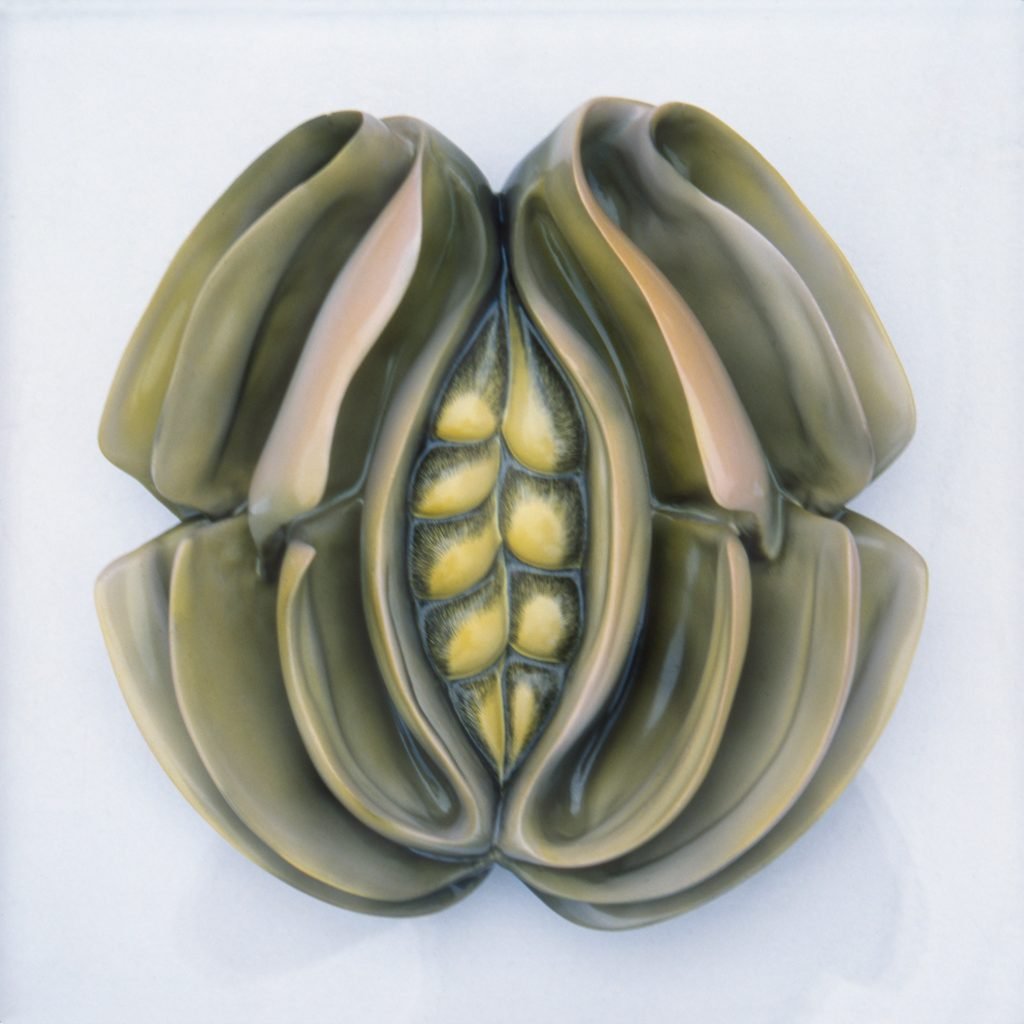
Judy Chicago, Virginia Woolf Test Plate (1975–1978). Collection Hammer Museum, Los Angeles, gift of the Grinstein Family. ©Judy Chicago/Artists Rights Society (ARS), New York. Photo © Donald Woodman/ARS, New York.
This allows for a greater focus on the projects both before and after, such as the challenging “Holocaust Project” (1985–93) that Chicago created with her husband, photographer Donald Woodman, an exploration not only of their shared Jewish faith, but of humankind’s tendencies toward cruelty and evil.
This section of the exhibition yields one of its showstoppers, the monumental stained glass window Rainbow Shabbat (1992). Displayed in front of a bench in a darkened gallery, it offers a moment of prayerful repose, no matter the viewer’s personal religious beliefs.
Equally powerful are the giant tapestries of “The Birth Project” (1980–85), Chicago’s response to her realization that the subject of birth, the literal source of all humanity, was almost entirely absent from the annals of art history.
Though the artist never had children herself, she actually witnessed a friend giving birth in preparation for the project, which is a remarkable celebration of motherhood and the daunting challenges of delivering a child.
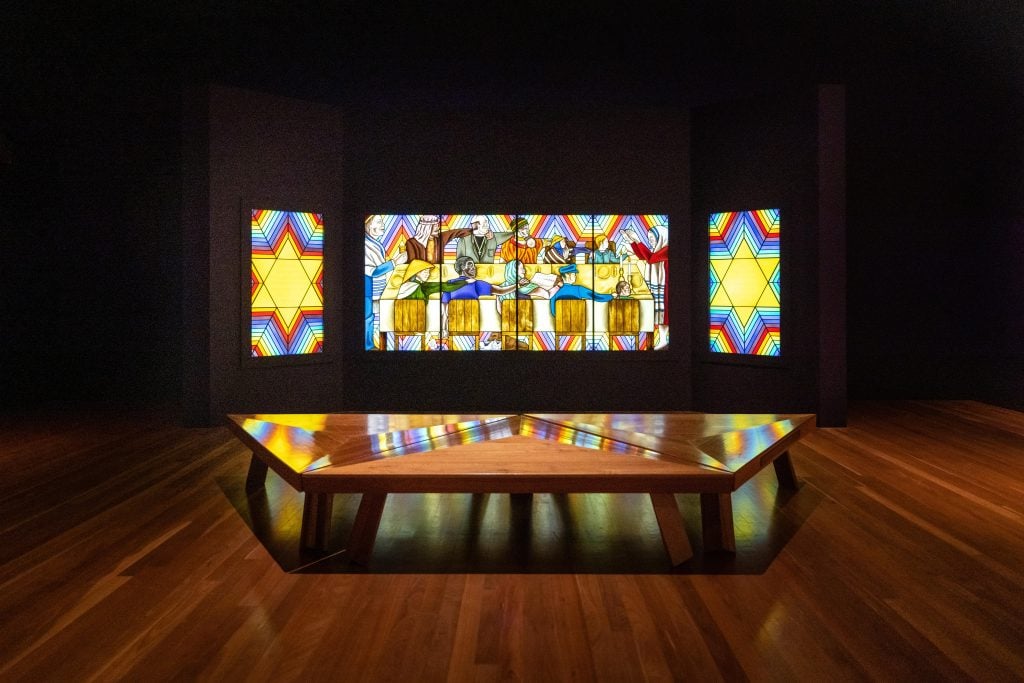
Judy Chicago and Donald Woodman, Rainbow Shabbat “Holocaust Project” (1992) in her retrospective at the de Young Museum, San Francisco. Photo by Gary Sexton, courtesy the de Young Museum, San Francisco.
“The sheer rigor with which Judy approaches every body of work, the extent of research that goes into developing each body of work, and the monumentality of each of these projects, whether in terms of scale, or in terms of numbers—these are significant bodies of work that are incredibly ambitious,” Schmuckli said. “It’s impressive and deeply surprising to people to realize the depth and breadth of her practice.”
Indeed, though Chicago is primarily known as a feminist, the retrospective reveals her, at long last, as an artist remarkably adept at adapting her vision to a vast array of mediums. There is, naturally, her embrace of so-called craft, with tapestry and needlepoint and porcelain, but there is also industrial autobody painting, hand-cast paper sculpture, and even her own sprayed take on oil painting, a historically male-dominated medium, in “PowerPlay,” her first depictions of men.
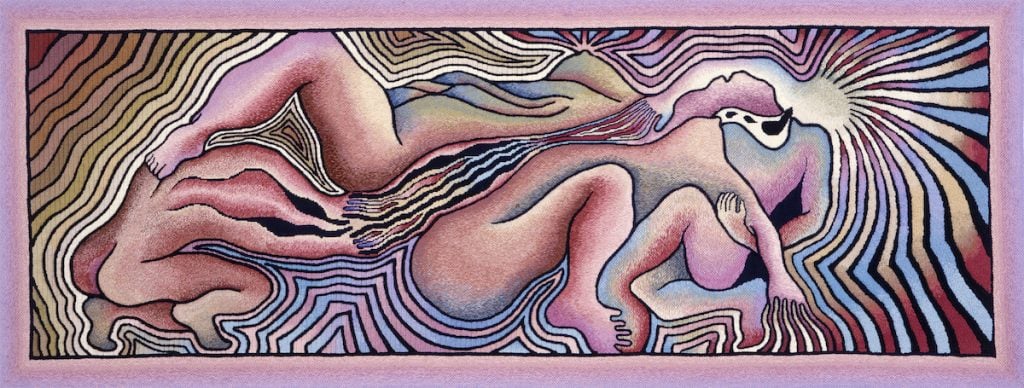
Judy Chicago, Birth Trinity: Needlepoint 1 “Birth Project (1983). Needlepoint by Susan Bloomenstein, Elizabeth Colten, Karen Fogel, Helene Hirmes, Bernice Levitt, Linda Rothenberg, and Miriam Vogelman. The Gusford Collection, Los Angeles. ©Judy Chicago/Artists Rights Society (ARS), New York. Photo ©Donald Woodman/ARS, New York.
Perhaps most unique of all, the de Young commissioned Chicago to make a new “Atmospheres” piece, open-air performancs featuring explosions of colorful smoke, for the occasion of the show.
Staged for a crowd of some 8,000 people, Forever de Young ignited pyrotechnics and released dust clouds of colored pigment from a pyramidal structure in front of the museum. Chicago had staged similarly ephemeral works in the desert in the ’60s and ’70s, partly in response to the large-scale permanent interventions on the physical earth that represented the Land Art of the period—another largely male-driven movement.
“Judy’s approach to nature was very different,” Schmuckli said. “She didn’t want to change it, she didn’t want to colonize it or imprint herself onto it, but wanted to create ephemeral situations that would celebrate the beauty of the particular site by letting pigment fly into the air to create these temporal sculptures.”
The exhibition has been in the works since 2016, when Schmuckli first approached Chicago about doing a project at the museum. That was the year that the artist signed with her two galleries, San Francisco’s Jessica Silverman Gallery and New York’s Salon 94—leading to newfound attention among collectors. In the last five years, many of the works slated for inclusion the show, which had stayed in Chicago’s possession for decades, have finally found new homes.
“Everybody who learns that is surprised. She’s such a popular icon people simply assume her media success translated into sales, but for many many years that was not the case,” Schmuckli said.
“As a woman, one of the the most daring things that Judy did early on is to decide not to work with a visual vocabulary that was generally accepted, but prevented her from expressing herself fully,” Schmuckli said. “And she’s a role model in that sense, in not abiding by the hierarchy, but daring to break with those conventions and invent her own. While it has taken many many decades for that finally to be celebrated, it’s a very important legacy and a very important lesson.”
See more photos from the show below.
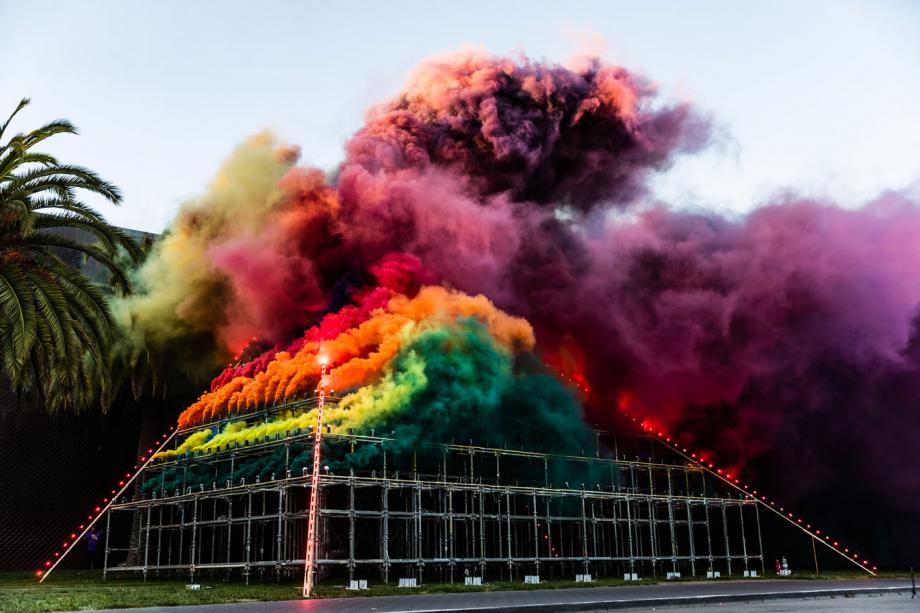
Judy Chicago, Forever de Young. The smoke Sculpture was commissioned by the de Young Museum, San Francisco, as part of the artist’s retrospective. Photo by Scott Strazzante for Drew Altizer Photography, courtesy of the Fine Arts Museum of San Francisco.
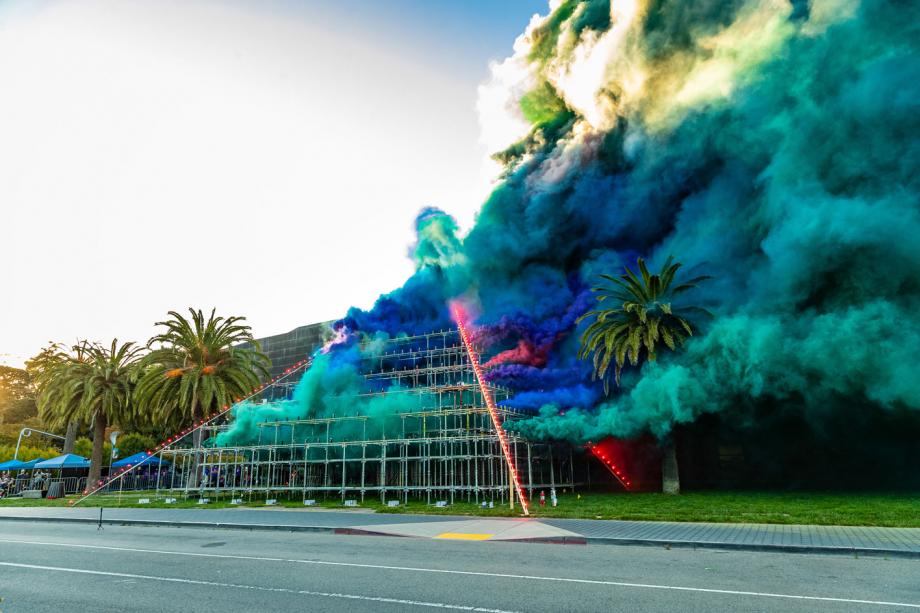
Judy Chicago, Forever de Young. The smoke Sculpture was commissioned by the de Young Museum, San Francisco, as part of the artist’s retrospective. Photo by Scott Strazzante for Drew Altizer Photography, courtesy of the Fine Arts Museum of San Francisco.
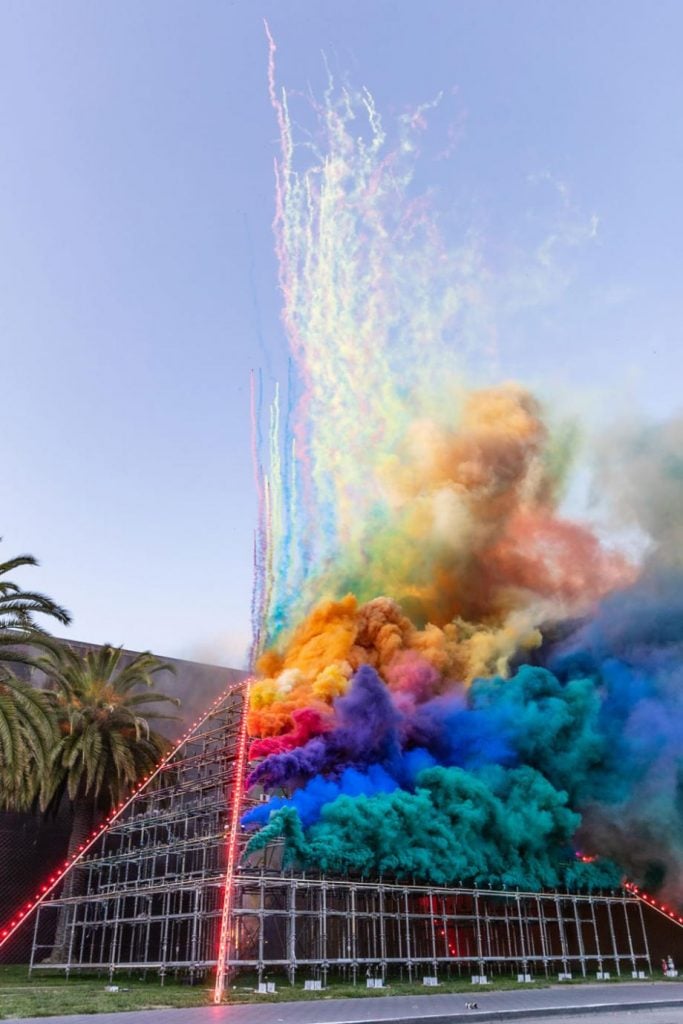
Judy Chicago, Forever de Young. The smoke Sculpture was commissioned by the de Young Museum, San Francisco, as part of the artist’s retrospective. Photo by Scott Strazzante for Drew Altizer Photography, courtesy of the Fine Arts Museum of San Francisco.
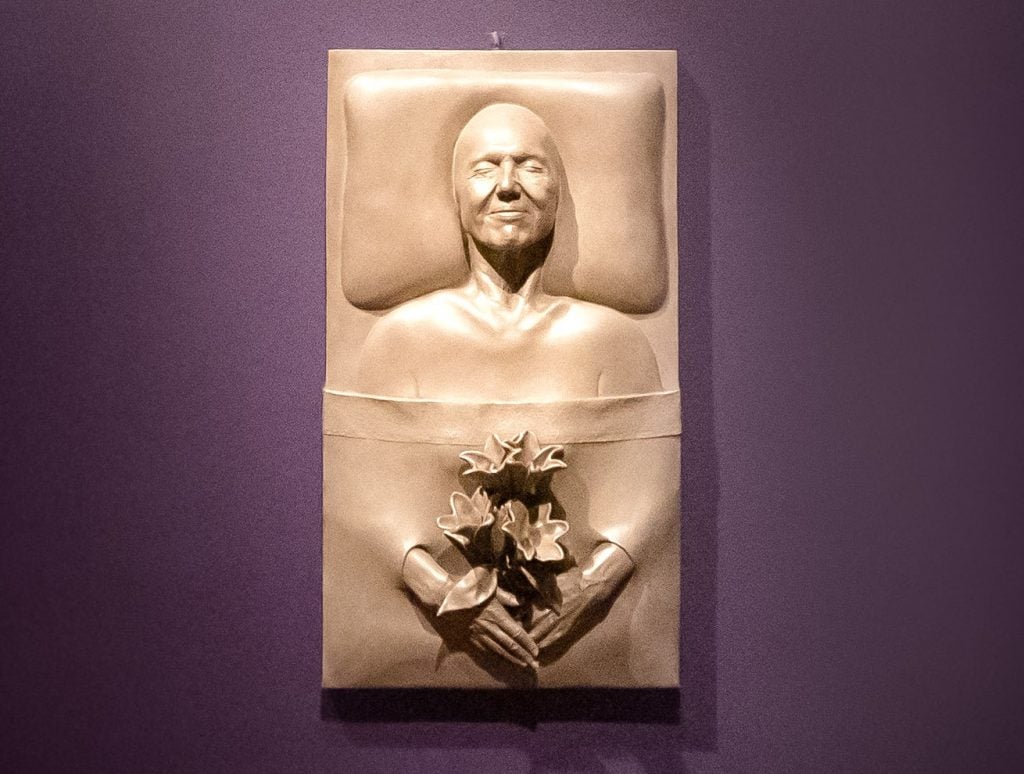
Judy Chicago, Mortality Relief (2018) in her retrospective at the de Young Museum, San Francisco. Photo by Gary Sexon, courtesy the de Young Museum, San Francisco.

Judy Chicago, The Fall, “Holocaust Project” (1993). Weaving by Audrey Cowan. Collection of the Museum of Arts & Design, New York. ©Judy Chicago/Artists Rights Society (ARS), New York. Photo ©Donald Woodman/ARS, New York, courtesy of the Fine Arts Museums of San Francisco.
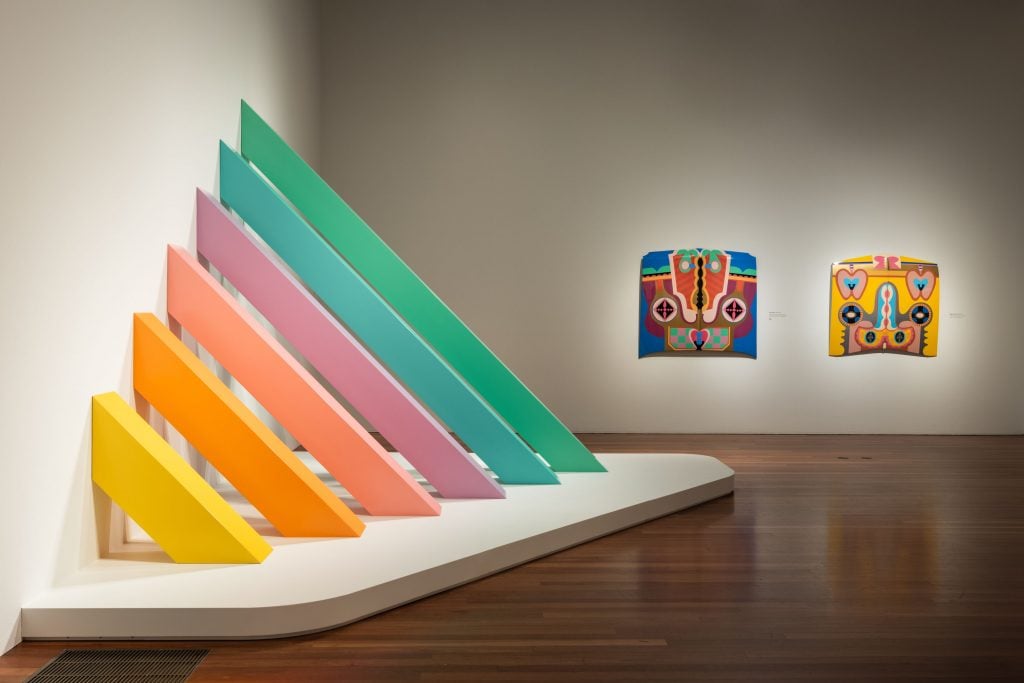
Judy Chicago, Rainbow Pickett (1965/2004), Birth Hood (1965/2011) and Bigamy Hood (1965/2011) in her retrospective at the de Young Museum, San Francisco. Photo by Drew Altizer, courtesy the de Young Museum, San Francisco.
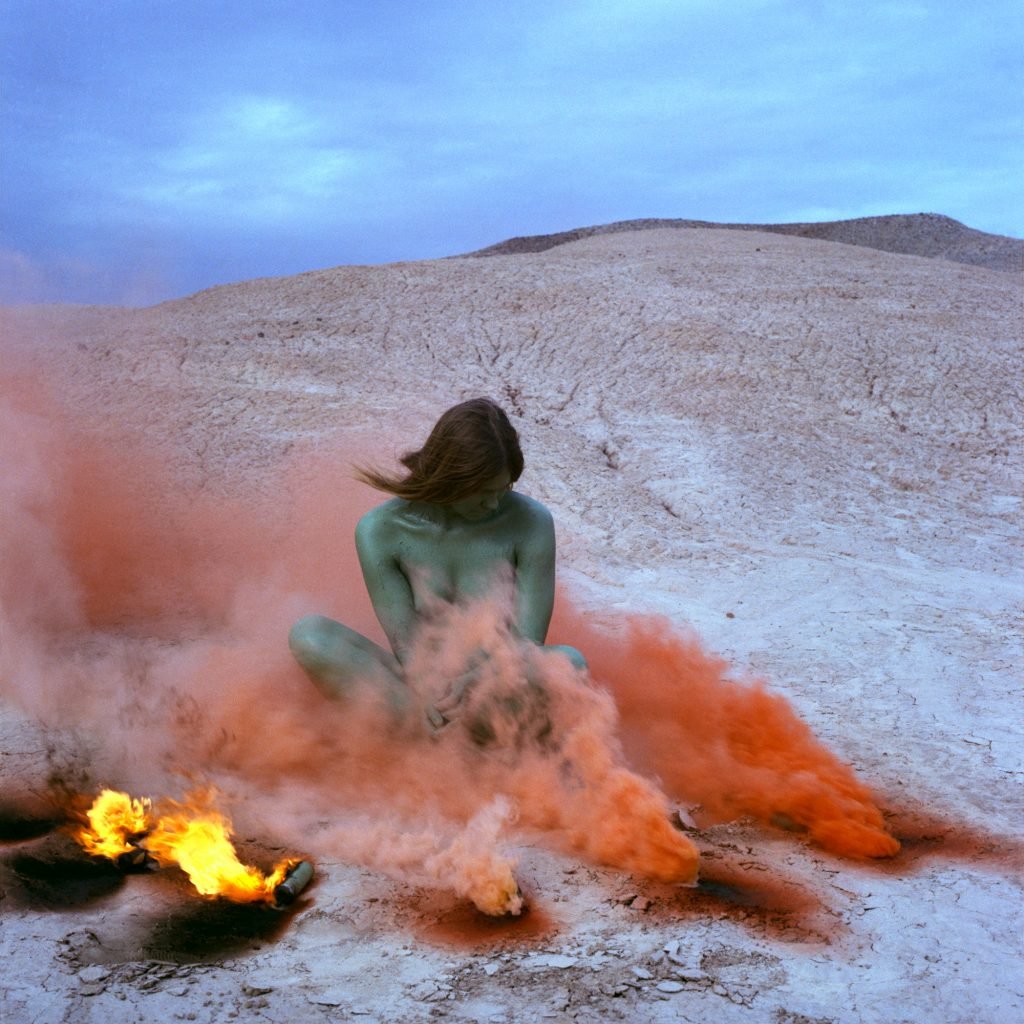
Judy Chicago, Immolation, “Women and Smoke”(1972). Courtesy of the artist; Salon 94, New York; and Jessica Silverman, San Francisco. ©Judy Chicago/Artists Rights Society (ARS), New York. Photo courtesy of Through the Flower Archives, provided courtesy of the Fine Arts Museums of San Francisco.
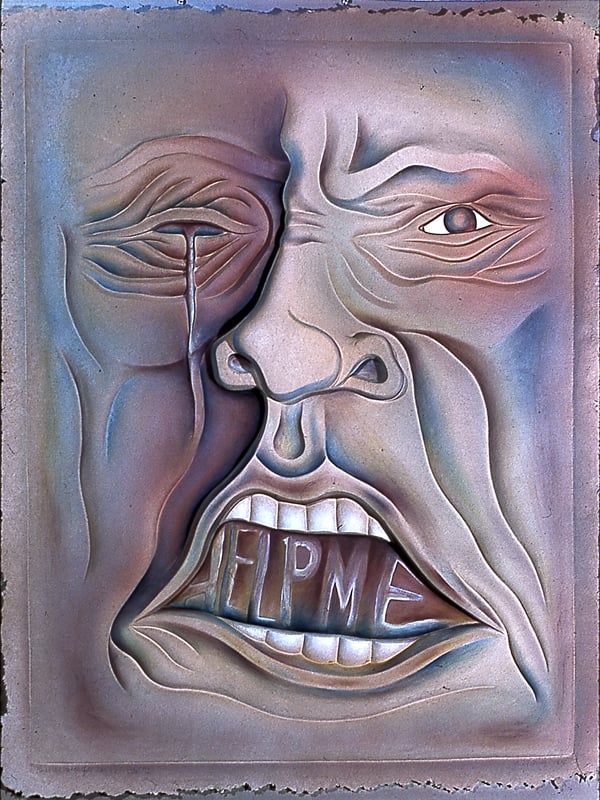
Judy Chicago, Doublehead with Gold Tear/Help Me, “PowerPlay” (1986), edition 6/12. Collection Jordan Schnitzer Family Foundation. ©Judy Chicago/Artists Rights Society (ARS), New York. Photograph ©Donald Woodman/ARS, NY.
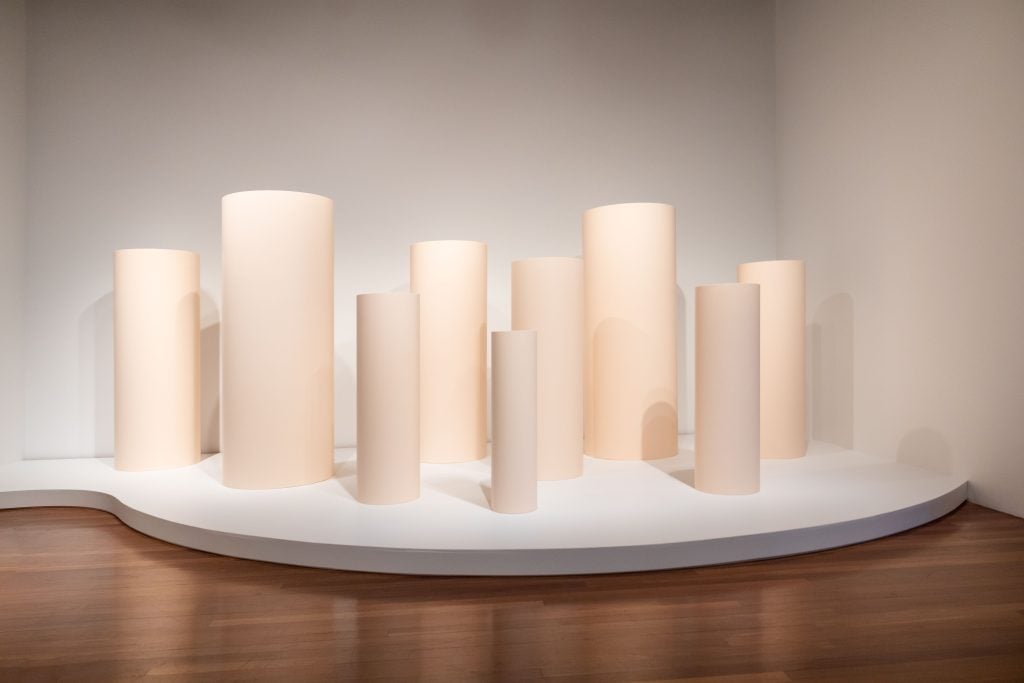
Judy Chicago, 10 Part Cylinders (1966/2019) in her retrospective at the de Young Museum, San Francisco. Photo by Gary Sexton, courtesy the de Young Museum, San Francisco.
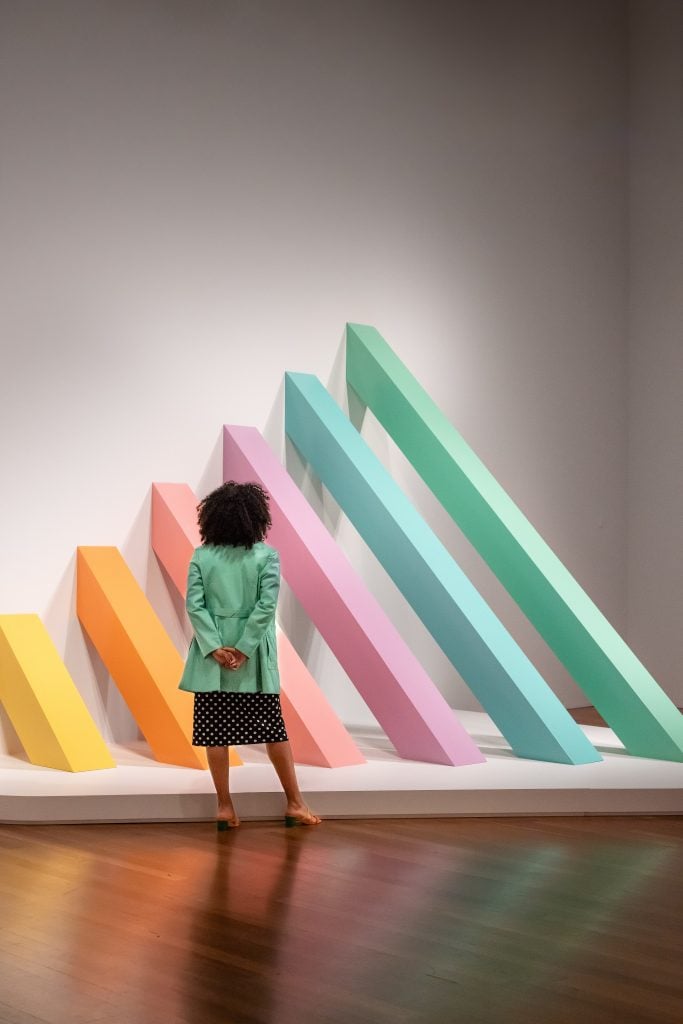
Judy Chicago, Rainbow Pickett (1965/2004) in her retrospective at the de Young Museum, San Francisco. Photo by Gary Sexton, courtesy the de Young Museum, San Francisco.
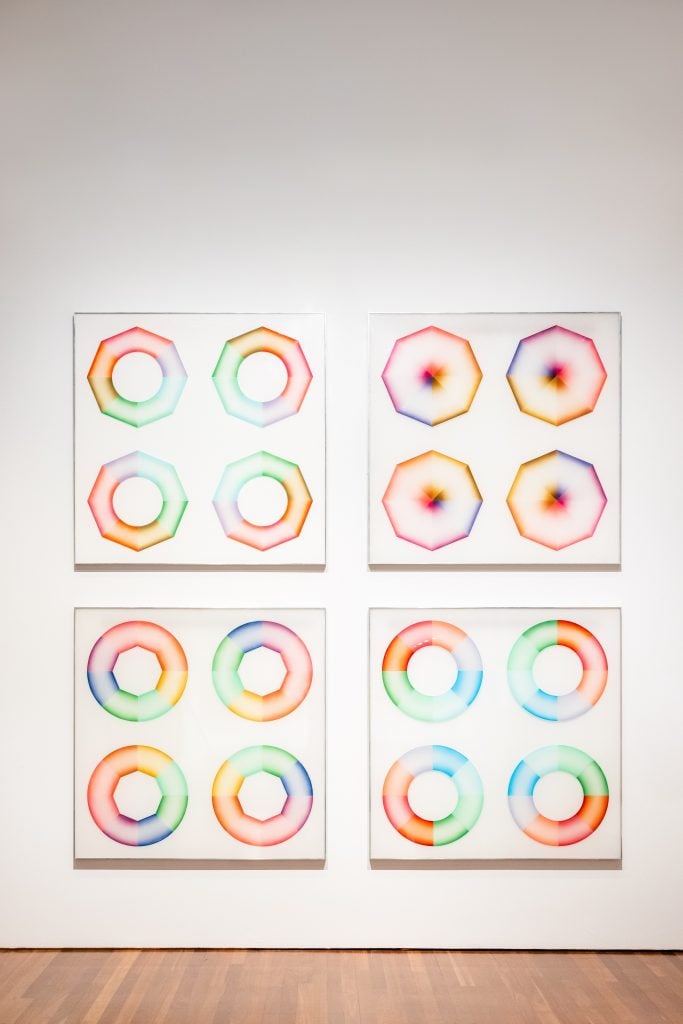
Judy Chicago, “Pasadena Lifesavers” paintings (1969–70) in her retrospective at the de Young Museum, San Francisco. Photo by Gary Sexton, courtesy the de Young Museum, San Francisco.
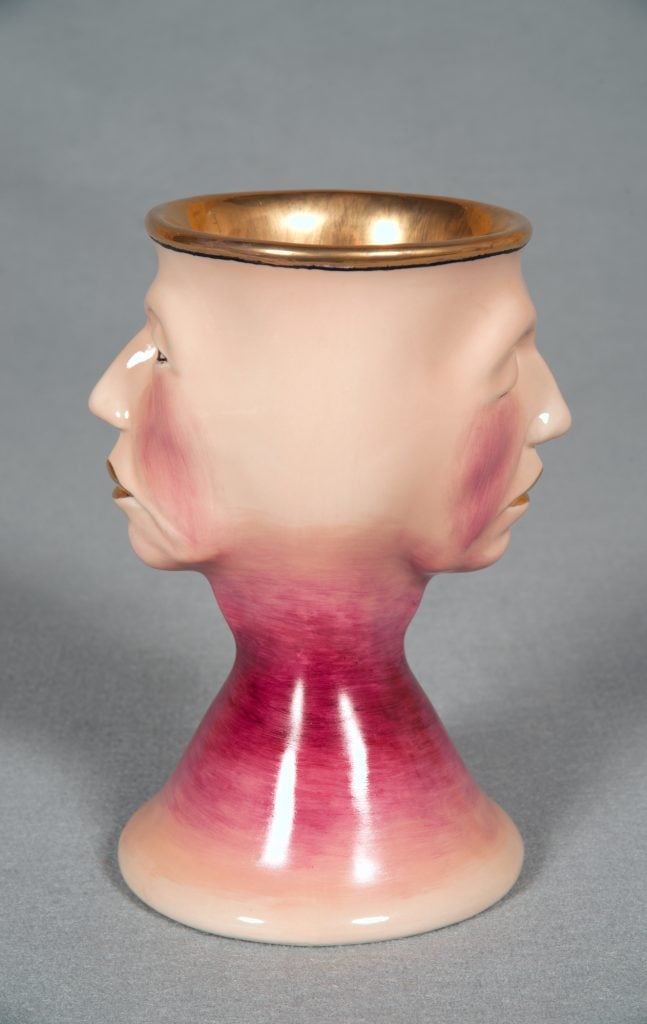
Judy Chicago, Two Faced Toby Mug #12 (2010). Collection Toby Shor. ©Judy Chicago/Artists Rights Society (ARS), New York. Photo ©Donald Woodman/ARS, New York.

Judy Chicago and Donald Woodman, Rainbow Shabbat “Holocaust Project” (1992). Collection Jordan Schnitzer Family Foundation. ©Judy Chicago/Artists Rights Society (ARS), New York
Photo ©Donald Woodman/ARS, New York.
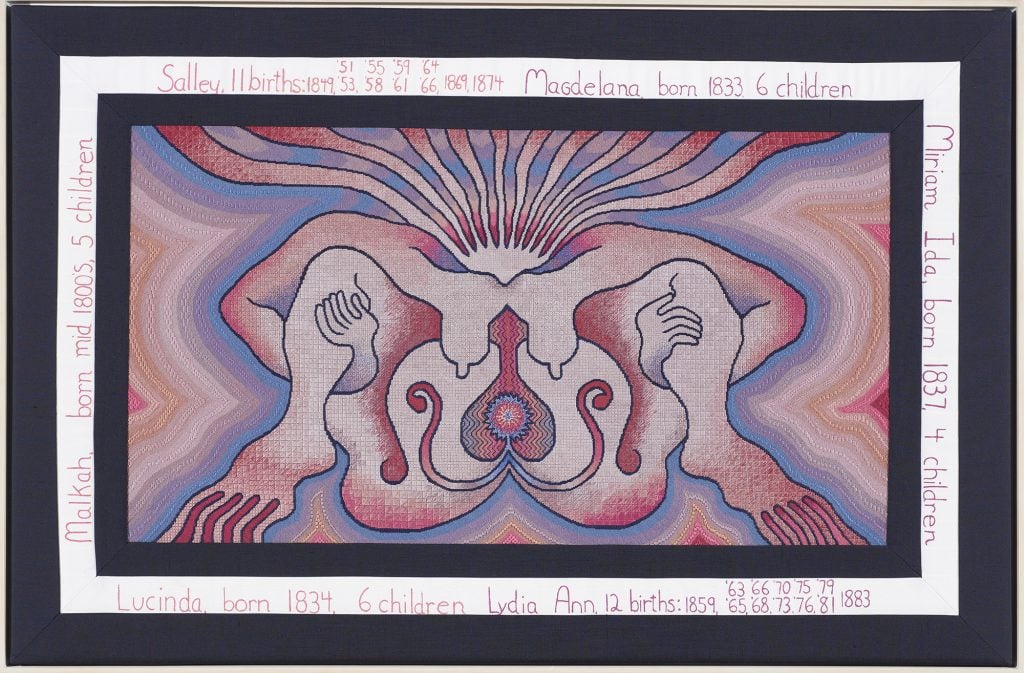
Judy Chicago, The Crowning, “Birth Project” (1984). Painting on 18 mesh canvas by Judy Chicago with Lynda Healy; needlepoint by Frannie Yablonsky. ©Judy Chicago/Artists Rights Society (ARS), New York. Photo Jorge Bachman, courtesy of the Fine Arts Museums of San Francisco.
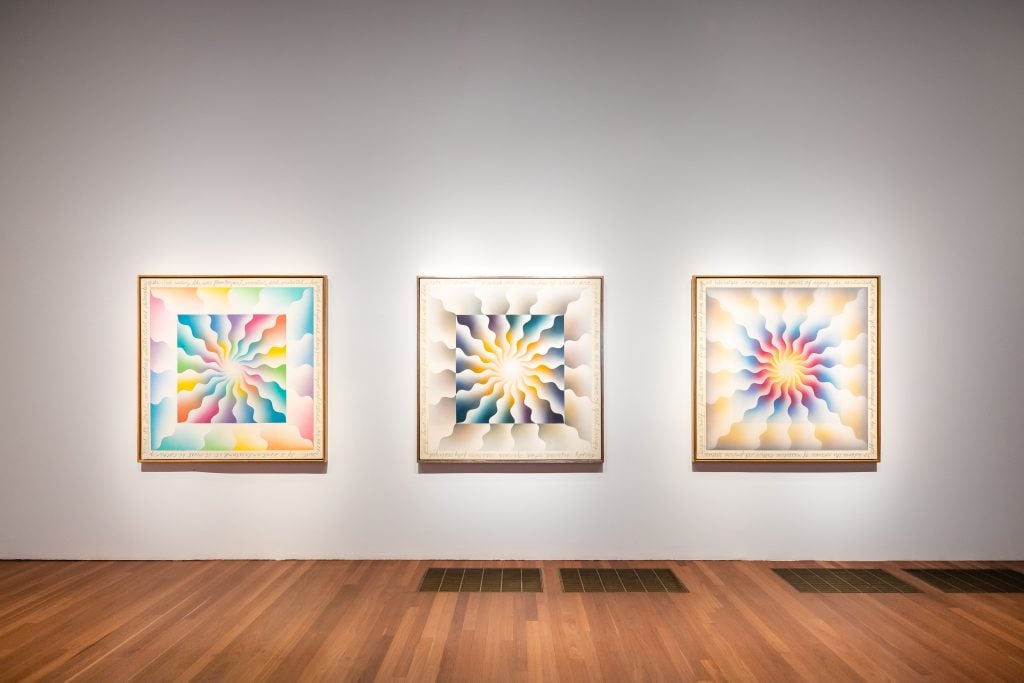
Judy Chicago, “Great Ladies” paintings (1970–74) in her retrospective at the de Young Museum, San Francisco. Photo by Gary Sexton, courtesy the de Young Museum, San Francisco.
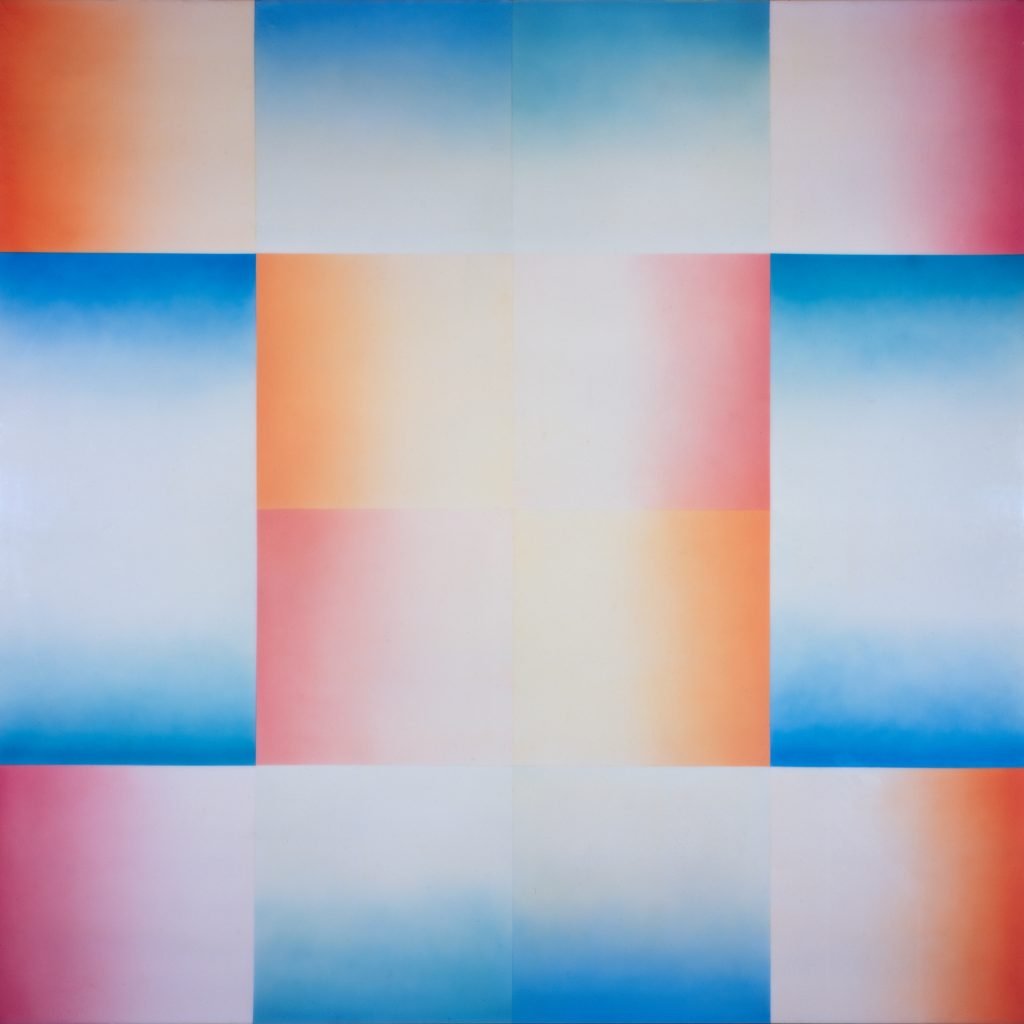
Judy Chicago, Big Blue Pink (1971). Collection Art Bridges Foundation, Texas. ©Judy Chicago/Artists Rights Society (ARS), New York. Photo ©Donald Woodman/ARS, New York.
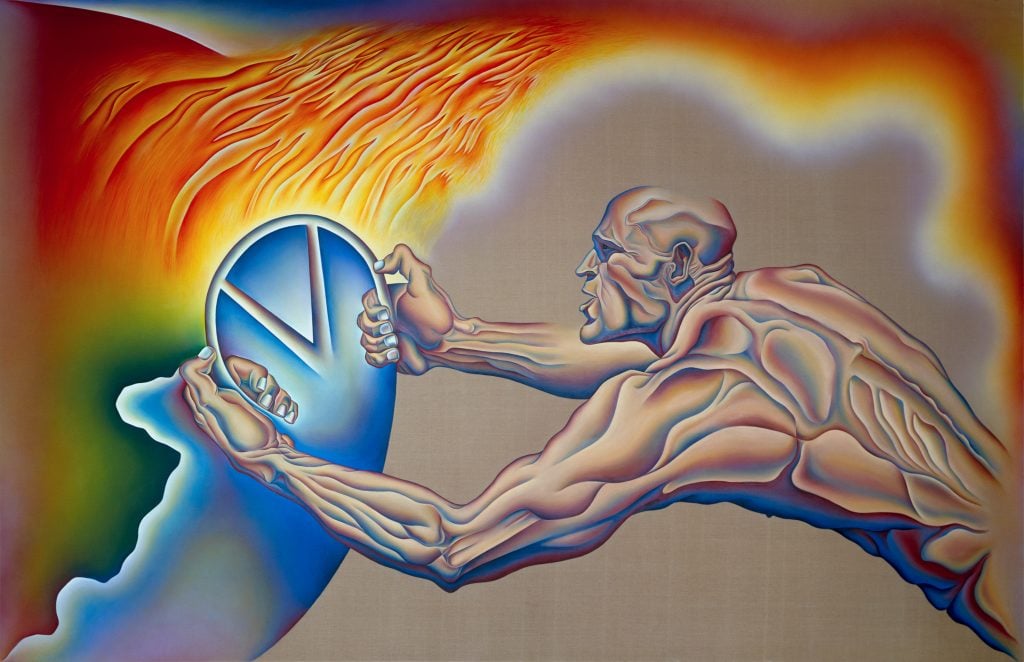
Judy Chicago, Driving the World to Destruction, “PowerPlay” (1985). Courtesy of the artist; Salon 94, New York; and Jessica Silverman, San Francisco. ©Judy Chicago/Artists Rights Society (ARS), New York. Photograph ©Donald Woodman/ARS, NY, courtesy of the Fine Arts Museums of San Francisco.
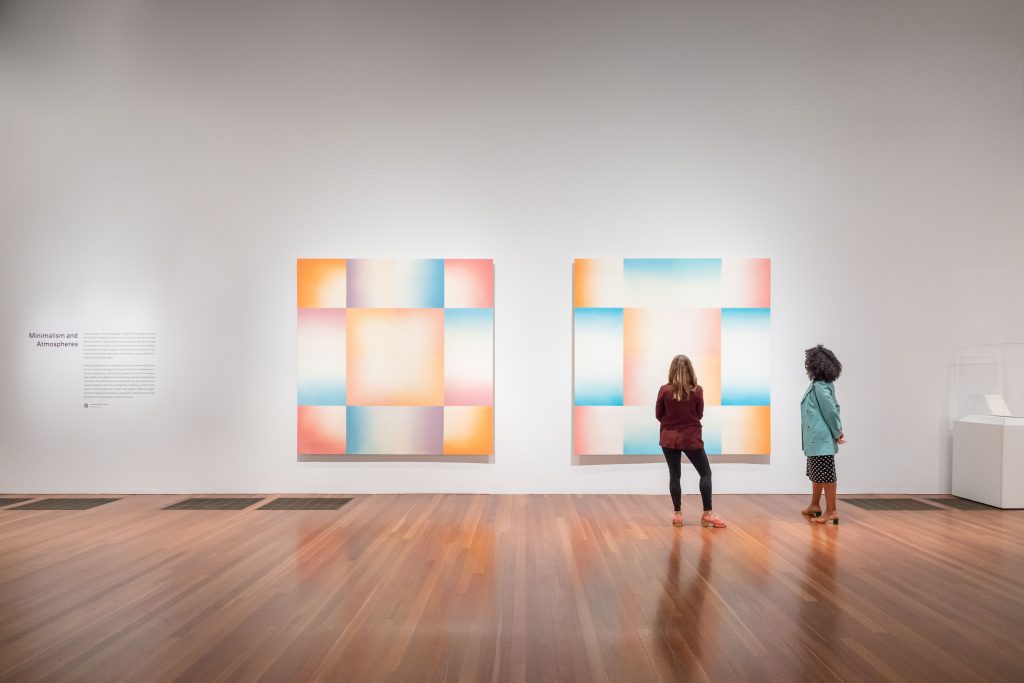
Judy Chicago, “Flesh Gardens” paintings (1971) in her retrospective at the de Young Museum, San Francisco. Photo by Gary Sexton, courtesy the de Young Museum, San Francisco.
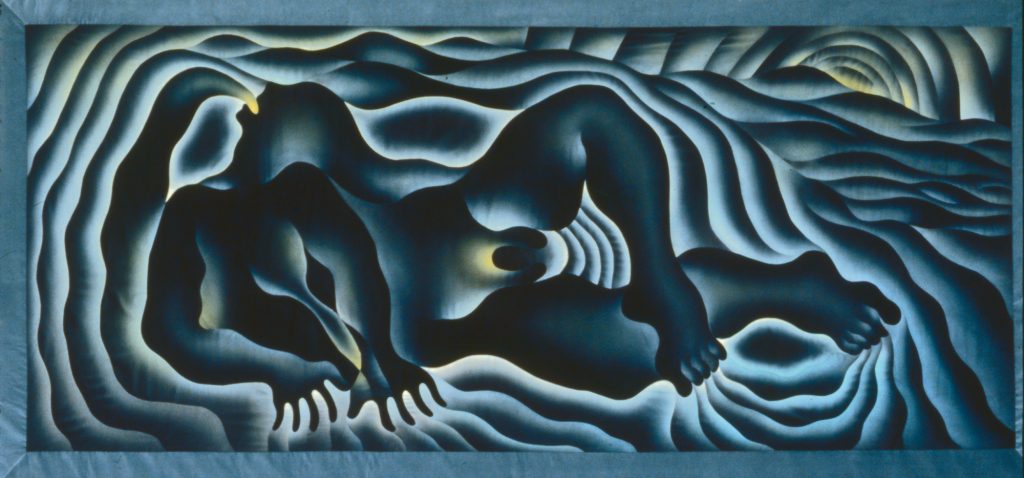
Judy Chicago, Earth Birth, “Birth Project” (1983). Quilting by Jacquelyn Moore Alexander. Collection of the Longlati Foundation. ©Judy Chicago/Artists Rights Society (ARS), New York. Photo ©Donald Woodman/ARS, New York.
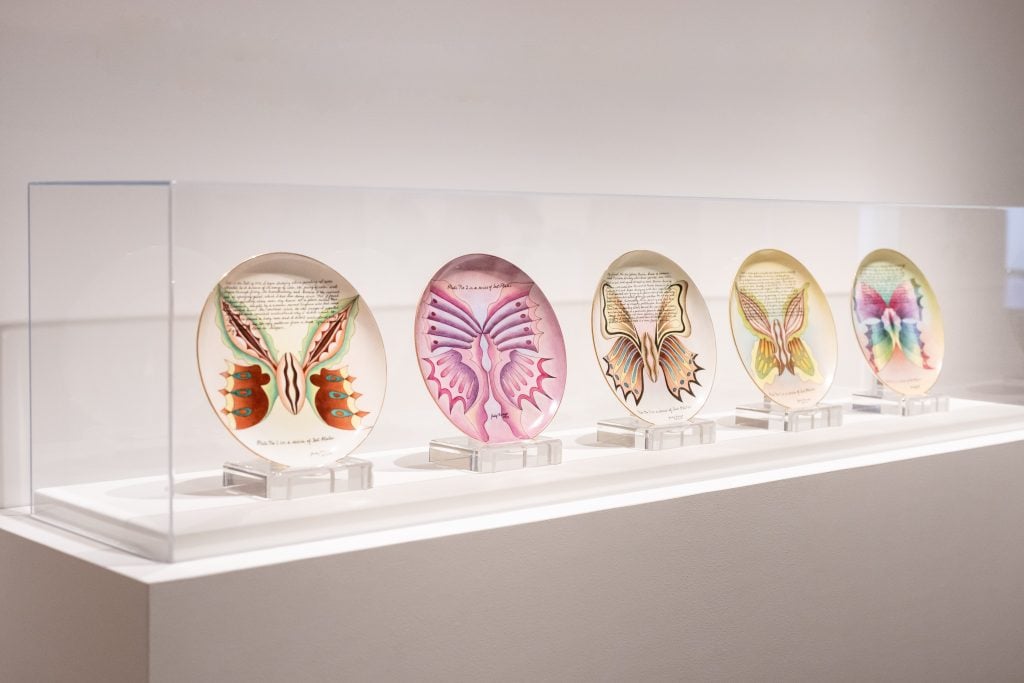
Judy Chicago, The Dinner Party test plates in her retrospective at the de Young Museum, San Francisco. Photo by Gary Sexon, courtesy the de Young Museum, San Francisco.
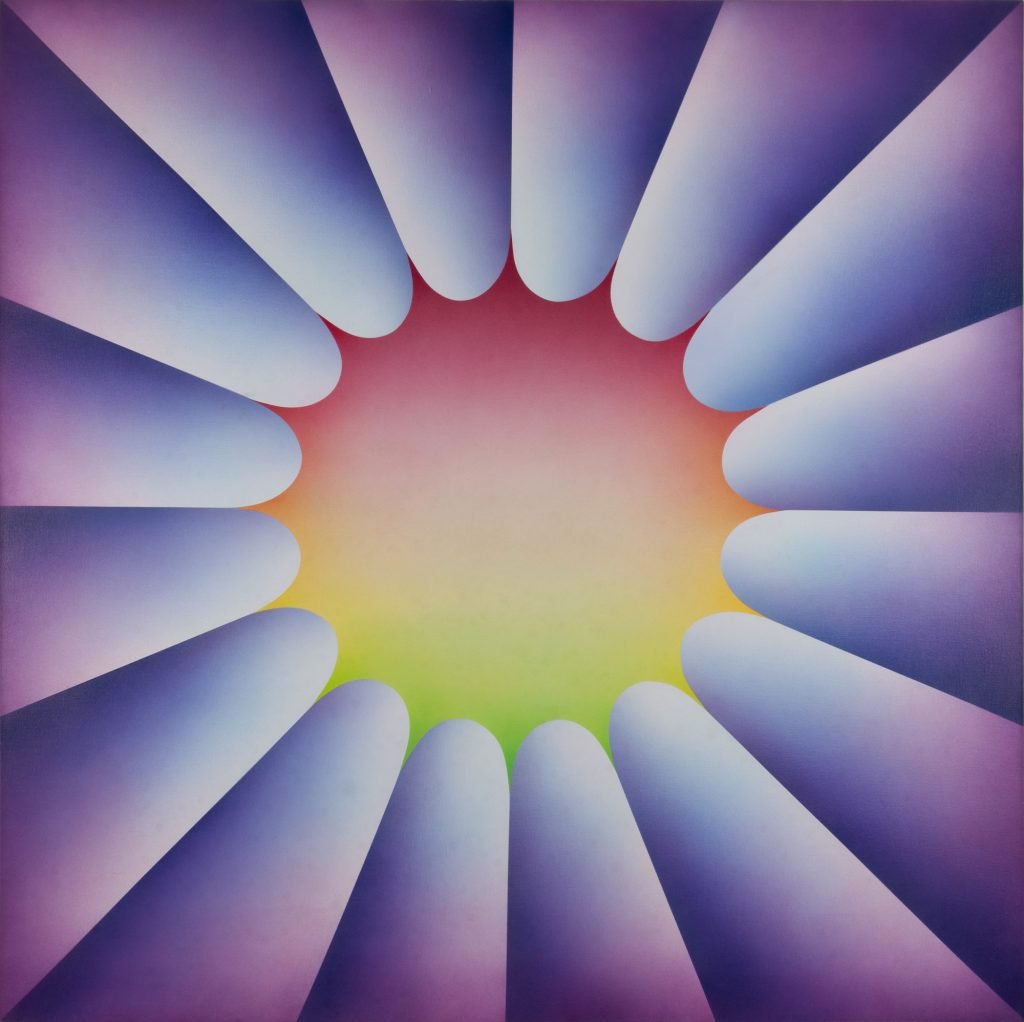
Judy Chicago, Through the Flower 2 (1973). Collection Diane Gelon. ©Judy Chicago/Artists Rights Society (ARS), New York. Photo ©Donald Woodman/ARS, New York, courtesy of the Fine Arts Museums of San Francisco.
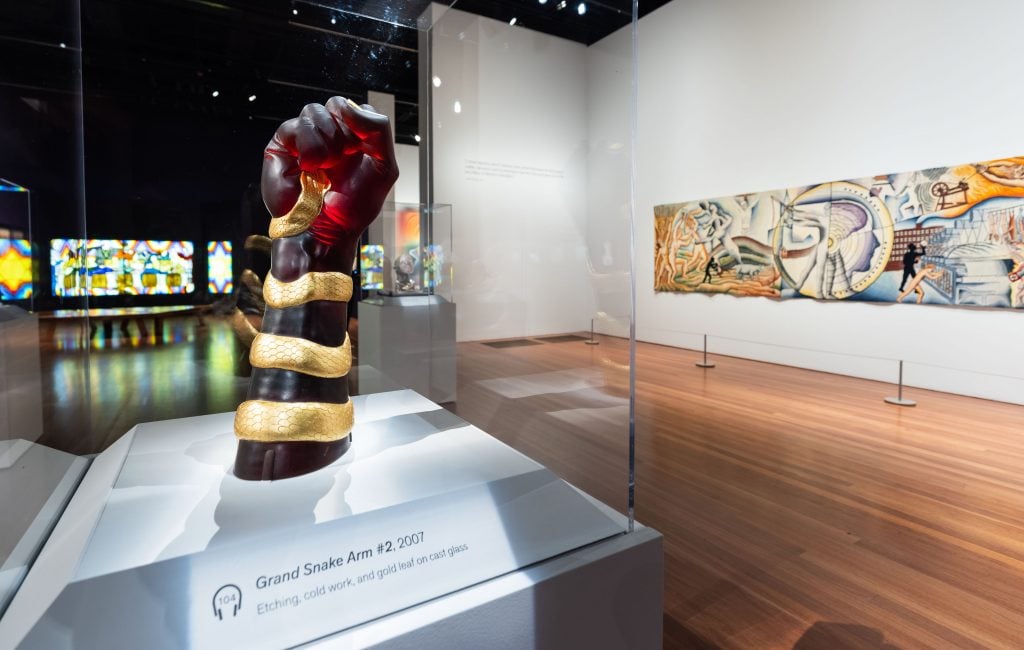
Judy Chicago, Grand Snake Arm #2 (2007) in her retrospective at the de Young Museum, San Francisco. Photo by Drew Altizer, courtesy the de Young Museum, San Francisco.
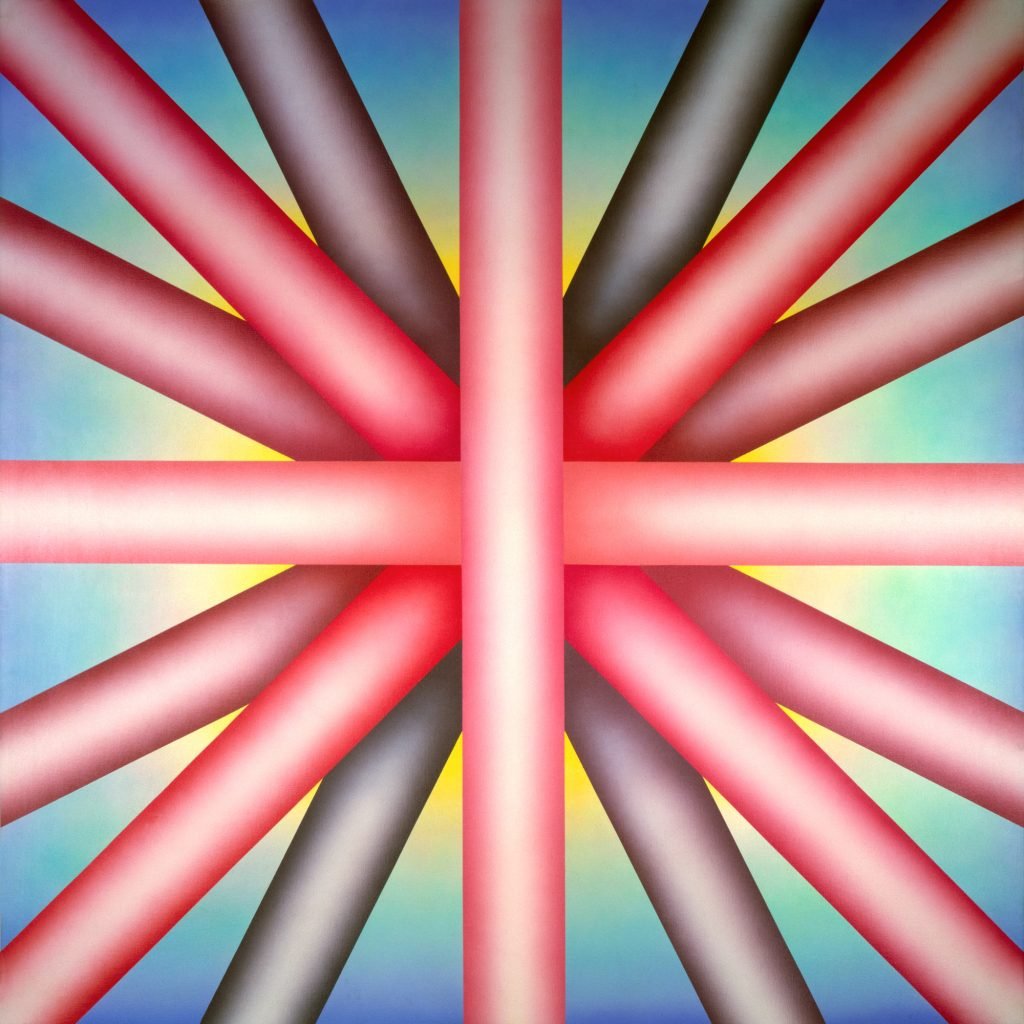
Judy Chicago, Heaven is for White Men Only (1973). Collection New Orleans Museum of Art, gift of the Frederick R. Weisman Art Foundation. ©Judy Chicago/Artists Rights Society (ARS), New York. Photo ©Donald Woodman/ARS, New York.
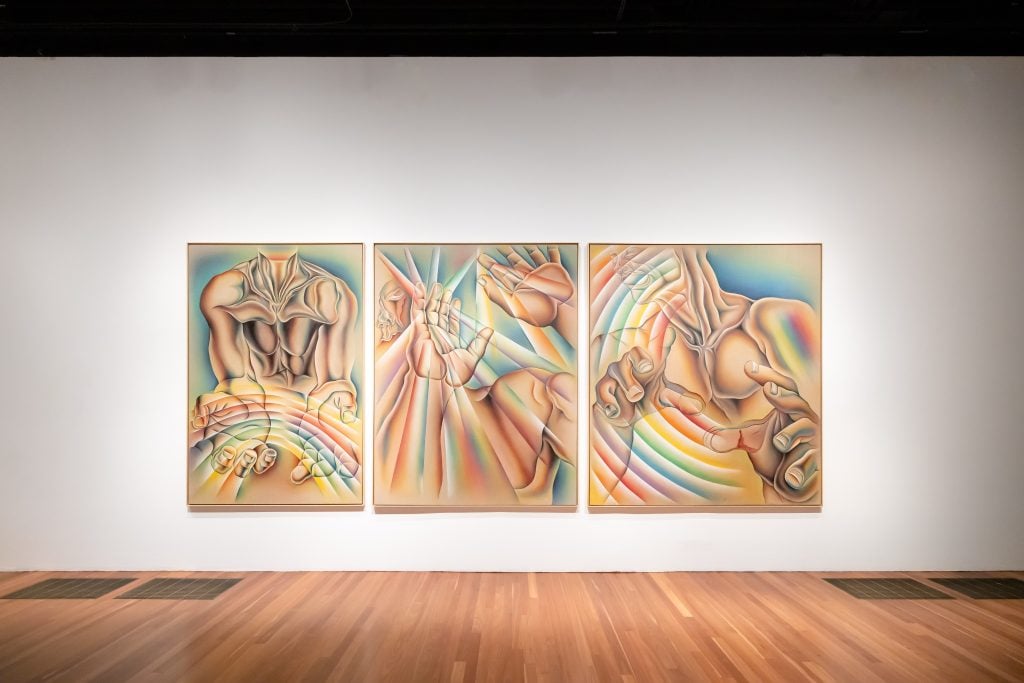
Judy Chicago, “PowerPlay” paintings (1982–87) in her retrospective at the de Young Museum, San Francisco. Photo by Gary Sexton, courtesy the de Young Museum, San Francisco.
“Judy Chicago: A Retrospective” is on view at the Fine Arts Museums of San Francisco’s de Young Museum, Golden Gate Park, 50 Hagiwara Tea Garden Drive, San Francisco, California, August 28, 2021–January 9, 2022.